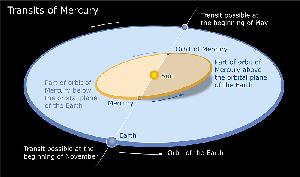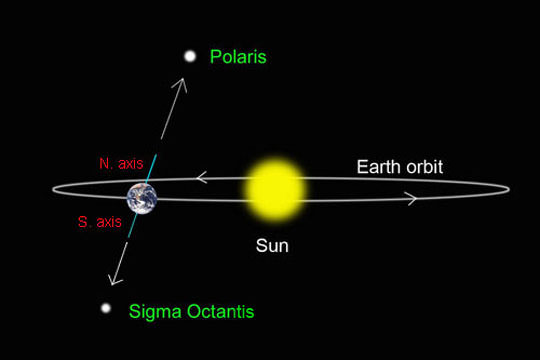I hope that by 2050 the entire solar system will have been explored and mapped by flotillas of tiny robotic craft.
–Martin Rees
SOLAR SYSTEM INTRODUCTION
Let us first understand some basic properties of planets.
1. SIZE
Jupiter, followed by Saturn, are the largest planets. But how does size of planets compare with that of Earth? Radius of Earth is 6378 KM. If this is assumed as 1 unit, then the radius of the planets is as follows:
Mercury: 1;
BOND ALBEDO: There are two main types of reflectivity: specular reflectivity and diffuse reflectivity. Specular reflectivity measures how much of the incoming light gets reflected by the object in the direction given by the mirror angle. In contrast, diffuse reflectivity measures how much light gets reflected in all directions. A mirror has high specular reflectivity and low diffuse reflectivity. In contrast, sand has low specular reflectivity and high diffuse reflectivity. the easiest way to turn a strong specular reflector into a strong diffuse reflector is to roughen it up. For instance, take a smooth sheet of ice and scratch it up.
When it comes to planets and moons, the surface roughness is quite high. For this reason, their overall brightness is best described by their diffuse reflectivity. There are several ways to define and measure the diffuse reflectivity. In the context of planets and moons, the common and perhaps most useful way is to define it in terms of “bond albedo”. The bond albedo is the average amount of total light scattered by the body in any direction, relative to the total amount of light that is incident. A bond albedo of 0% represents a perfectly black object and a bond albedo of 100% represents an object that scatters all of the light. The earth has a bond albedo of 31%. In contrast, the moon has a bond albedo of 12%.
- MEAN DENSITY
- GRAVITY
- BOND ALBEDO
- ECCENTRICITY
Experiments For Learners:
DIYHA (do it yourself home activity):
1. Practical 1: Find the height of a tree or building near you.
2. Practical 2: Suppose you know the distance between two cities.
3. Practical 3: Find .
9. Take the School Exam Quiz on this topic.
For Educators & Researchers:
1. Explain how GPS works through Trilateration and how are unique coordinates assigned to a place. How have these coordinates changed over the years.
2. Explain whether Pole stars coincide with the celestial poles even as the earth revolves round the sun?
3. Write a paper on the effect of earth’s axial precession (nutation) on its seasons.
4. Devise an experiment to find the longitude of the given place without using a clock.
5. Devise an experiment to find the distance between two cities
6. Make a 365-day activity calendar for various activities such as charting out Analemma, measuring sidereal day, positions of moon, planets, stars, etc.
ऋषि उवाच
1. ok
2. कोणे नता पृथ्वी मुख्य कारणं । सूर्यात दूरी समुद्रः च गौण।
To discuss or suggest more experiments, LOG IN here.
EARTH
Have you .
To understand in detail, log-in here.
For Learners:
DIYHA (do it yourself home activity):
1. Practical 1 (Insolation): Understand how the heat density changes with straight and angular light beams.
2. Take the School Exam Quiz on this topic, log-in here.
For Educators & Researchers:
1. Devise an experiment to
ऋषि उवाच
1. कोणे नता पृथ्वी मुख्य कारणं । सूर्यात दूरी समुद्रः च गौण।
2. k
To discuss or suggest more experiments, LOG IN here.
EARTH
Do you know t
1. Rotation
The earth rotates
For Learners:
DIYHA (do it yourself home activity):
1. Practical 1 (Thought Exercise): How would you determine the length of day in each of the following cases:
(i) Imagine
2. Take the School Exam Quiz on this topic, log-in here.
For Educators & Researchers:
1. Write a paper on how the seasons of earth change in different epochs due to earth’s axial precession (nutation).
ऋषि उवाच
1. ok
2. कोणे नता पृथ्वी मुख्य कारणं । सूर्यात दूरी समुद्रः च गौण।
To discuss or suggest more experiments, LOG IN here.
ECLIPSES
Do you know
1. Solar Eclipse
It is
For Learners:
DIYHA (do it yourself home activity):
1. Practical 1 (Earth-Moon distance): There are two methods.
2. Take the School Exam Quiz on this topic.
For Educators & Researchers:
1. Write down
ऋषि उवाच
1. ok
2. कोणे नता पृथ्वी मुख्य कारणं । सूर्यात दूरी समुद्रः च गौण।
To discuss or suggest more experiments, LOG IN here.




ESTIMATING TEMPERATURE OF SUN
GRAVITY GLOBE
LEADING ARTICLES
Do you know
1. Solar Eclipse
The .
2. Lunar Eclipse
ok
QUIZ
Each of the following questions has four answer options: a, b, c, d. Choose the correct one.
1. If you are situated anywhere at the Tropic of Cancer then your shadow can never point in this direction:
(a) North
(b) East
(c) South
(d) West
2. Consider the factors causing change of seasons on earth:
(i) Distance from the sun.
(ii) Rotation of earth around sun.
(iii) Precision of earth’s axis.
(iv) Tilt of earth’s axis.
Which of the following are the main factors responsible for change of seasons on earth?
(a) (i) and (ii)
(b) (i) and (iv)
(c) (ii) and (iii)
(d) (ii) and (iv)
3. The maximum possible range of Sun’s declination is:
(a) 23.45º
(b) 45º
(c) 46.9º
(d) 90º
5. The angle of the shadow formed by Sun at the flat earth’s surface is equal to the angle of:
(a) Latitude
(b) Longitude
(c) Inclination
(d) Declination
6. Match the following:
(a) 23:56:04
(b) 23:45
(c) 365:05:48:56
(d) 40,075 and 40,008
(e) 1.07 lakh and 1675
(f) 15.2 cr and 14.7 cr
(g) 4.05 lk and 3.60 lk (km)
(h) 8.28 lk and 25 cr
(i) 110.6 to 111.7
(j) 111.3 to zero
(k) 15′
(l) 0.257 and 3.89
(m) 1.97
—
(A) apogee and perigee distance between earth & moon (in km). The difference is 45k km.
(B) speed (km/hr) at which solar system is hurtling through MW galaxy and the duration (in earth years) of 1 revolution (galactic year).
(C) apogee and perigee distance between earth & sun (in km). The difference is 50 lakh km.
(D) average speed (in km/hr) of earth’s revolution and earth’s rotation (at equator)
(E) equatorial & polar circumference in km
(F) length of year in d:h:m:s
(G) angle of tilt of the earth’s axis to the plane of ecliptic
(H) length of sidereal day in h:m:s
(I) Distance per degree of Latitude (in km) at equator and at poles.
(J) Distance per degree of Longitude (in km) at equator and at poles. Away from the equator, this distance is 111.3 x cos(lat.)
(K) 15 minutes of arc variation occurs per day and per minute in Latitude and Longitude respectively.
(L) Angular change (in degrees) of Sun’s declination (i.e in the angle between equator and sun rays), and Number of days required for 1º change in Sun’s declination.
(M) This is the factor you have to multiply with your height (in feet) to find the distance to horizon (in km)
BMT (Bharat Mean Time) is a convenient reference for Time Difference from India
(Lahore of undivided Bharat taken as reference because of whole number with respect to GMT/ UTC).
| CITY/ COUNTRY | BMT + | GMT/UTC + |
| Alaska | -13 | -8 |
| California, Seattle, Vancouver | -12 | -7 |
| Salt Lake City | -11 | -6 |
| Peru, Colombia | -10 | -5 |
| Chicago, Texas, Mexico City | -10 | -5 |
| Florida, WDC, New York, Montreal | -9 | -4 |
| Chile | -9 | -4 |
| Rio de Janerio | -8 | -3 |
| GMT (London) | -5 | 0 |
| Italy, Germany, Norway | -3 | 2 |
| Egypt, S. Africa | -3 | 2 |
| Turkey, Moscow | -2 | 3 |
| Dubai | -1 | 4 |
| Kazakhastan | 0 | 5 |
| LAHORE | 0 | 5 |
| INDIA | 0.5 | 5.5 |
| Thailand | 2 | 7 |
| Indonesia | 3 | 8 |
| Singapore, Malaysia | 3 | 8 |
| China | 3 | 8 |
| Perth | 3 | 8 |
| Tokyo | 4 | 9 |
| Sydney | 5 | 10 |
| NZ | 7 | 12 |
